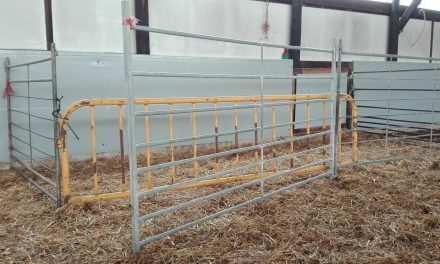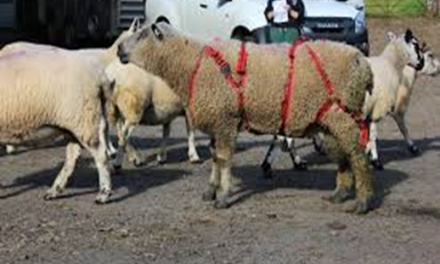This post is also available in:
![]()
![]()
![]()
![]()
![]()
Prevention strategies against Contagious agalactia
Solution name: Prevention strategies against Contagious agalactia
Aim: Hereafter we propose the basic steps for preventing sheep against Contagious agalactia.
Description:
Infections of sheep with species of genus Mycoplasma may cause disease called Contagious agalactia. Common clinical signs of the disease are mastitis, keratoconjunctivitis and arthritis. It is widespread all over the world producing dramatic economic loss, therefore, the establishment of prophylactic measures is of high consideration.
Although several species of the genus Mycoplasmas are involved in the pathogenesis of Contagious agalactia, the main causative factor is Mycoplasma agalactiae. Mycoplasma agalactiae seems to be sensitive in most of antibiotics in vitro. However, the same antibiotic on field has usually limited effectiveness against the microorganism. Therefore, the implementation of preventive measures is the only way of controlling the disease. Successful prevention can be achieved through vaccination modalities and periodical test of milk for the circulation of the microorganism.
Topic: health/management
Production: Dairy / Meat
Animal Category: Adult / Lamb / Replacement
Issue: Contagious agalactiae
Level of Solution: Knowledge, Practical
Country: Greece

How to implement it
As we said before there are two main points of prevention, vaccination modalities and milk test.
Regarding vaccination modalities: A wide variety of inactivated vaccines has been licenced for animal use in Europe. Most vaccination programs target the pregnant ewe so that acquired immunity is quite long lasting for covering the milking period. Two doses with one month interval with the second boosting one month before birth seems to provide adequate protection for six months. In cases of longer milking time, a third booster can be applied, as well.
Regarding milk test: Every clinical mastitis case should be subjected for Mycoplasmas microbiological testing. In addition, at least two bulk tank milk samples from the first and second trimester of milking period should be tested for the presence of Mycoplasmas. In case of positive samples, additional molecular techniques are required in order to specify the strain of the pathogen. According to laboratory results, vaccination program should be modified accordingly.
Expected benefits
– eliminating the milking loss
– eliminating the use of antimicrobials
Information Source / Usefull links
- Contagious agalactia: the shepherd’s nightmare, Loria et al., 2013, DOI: 10.1016/j.tvjl.2013.06.017
- Εκτροφή προβάτων και αιγών: Τι πρέπει να ξέρω; ΕΛΛΗΝΙΚΟΣ ΓΕΩΡΓΙΚΟΣ ΟΡΓΑΝΙΣΜΟΣ – ΔΗΜΗΤΡΑ, Ινστιτούτο Κτηνιατρικών Ερευνών, Θεσσαλονίκη 2017 ISBN: 978-960-98079-2-0






